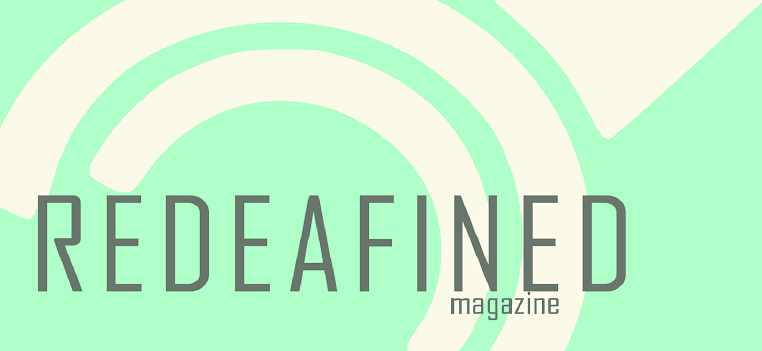 |
| Baby undergoing UNHS. Image courtesy Homerton University Hospital. |
The Universal Newborn Hearing Screening (UNHS) is a noninvasive hearing test given to newborns, generally before they are discharged from the hospital or birthing center. Currently, 42 states mandate the testing, though some allow for parents to exempt their children from the test.
Why Should My Baby Be Tested?
According to the American Association of Pediatrics, in the United States 1-3 out of every 1000 live births results in a child with moderate, severe, or profound hearing loss. Early detection of hearing loss is critical, as children need to be exposed to language as early as possible so they don't experience developmental delays. Knowing that your baby has hearing loss early helps you make the necessary adjustments to make sure they're getting access to linguistic information, and to consider amplification, communication and therapy options.
How Does the Test Work?
There are two different types of hearing tests used to determine babies' hearing levels. Both are fast, painless, and safe for infant use. Since babies cannot be tested using behavior-based tests (the raise your hand when you hear the tone type tests given to adults and older children) they are tested via either an Otoacoustic Emissions test (OAE) or an Auditory Brainstem Response test (ABR), which don't require any response from the patient. For an OAE test, a small earphone and microphone are placed into the baby's ear. The earphone plays a sound, and if the baby hears normally an echo of the sound is reflected back through the ear canal and measured by the microphone. If the baby has a hearing loss, a diminished or no echo is reflected. During an ABR, sounds are played into the baby's ears via headphones, and electrodes on the baby's head measure the auditory nerve responds (or doesn't respond) to the sounds played. Both tests are equally reliable and hospitals choose to use one or both to complete the UNHS.
What Happens if My Baby Fails?
Don't panic! Sometimes infants fail the hearing screening even when they have no permanent hearing loss. Just like adults, sinus issues like a cold or fluid in the ear can cause reduced hearing and may provide a false read. Additionally, statistics show that babies delivered by cesarean section are up to three times more likely to fail their initial hearing screenings, such a big difference that some hospitals delay c-section babies' screenings for a few weeks. Babies who fail their initial UNHS should be scheduled for follow-up testing with an audiologist or otolaryngologist.
What if my Baby is Diagnosed with a Hearing Loss After Follow-up Testing?
Still, don't panic! It's natural to feel upset, afraid, and worried about your baby his or her hearing loss. But hearing loss doesn't mean that a child cannot live a happy, full and normal life. There are a variety of services and educational programs designed especially with deaf and hard-of-hearing children in mind, and technological advancements have provide deaf children today with unprecedented access to sound. To read about one mom dealing with the news that her daughter was deaf, and her education and technology decisions, click here. The most important thing you can do for your baby as soon as you find out about his or her hearing loss is give them immediate access to language. Hearing babies are exposed to language and sound even while in the womb, so your baby may have some catching up to do!
What if my Baby is Diagnosed with a Hearing Loss After Follow-up Testing?
Still, don't panic! It's natural to feel upset, afraid, and worried about your baby his or her hearing loss. But hearing loss doesn't mean that a child cannot live a happy, full and normal life. There are a variety of services and educational programs designed especially with deaf and hard-of-hearing children in mind, and technological advancements have provide deaf children today with unprecedented access to sound. To read about one mom dealing with the news that her daughter was deaf, and her education and technology decisions, click here. The most important thing you can do for your baby as soon as you find out about his or her hearing loss is give them immediate access to language. Hearing babies are exposed to language and sound even while in the womb, so your baby may have some catching up to do!
Even if you plan to choose a communication tract that includes or focuses on amplification and auditory-verbal therapy, using sign language with deaf children, particularly during the critical first two years of language learning and development, can ensure that they don't fall cognitively or linguistically behind their hearing peers. While some specialists suggest that using sign language delays speech, this position is generally regarded as outdated. To read about the benefits of bilingualism for all children, check out our Language on the Move guest post. For links to scientific studies about the effects of sign language on linguistic, cognitive and speech development check out Rachel Coleman and Signing Time's research links. To see a cute video of two-year old chatting with her mother in sign language click here. As is evident in the footage, Ava is able to communicate far better than her two-year old non-signing peers! (Note, Ava and her mother are using British Sign Language (BSL), as sign language is not universal, even between English-speaking countries.)

No comments:
Post a Comment